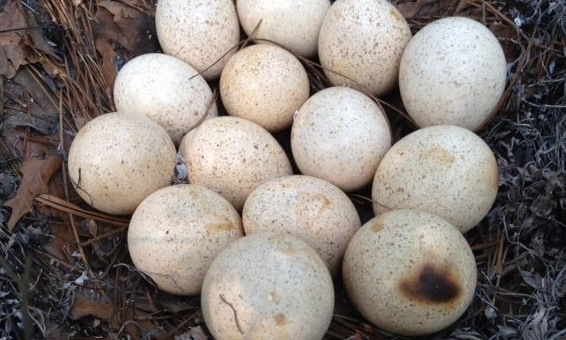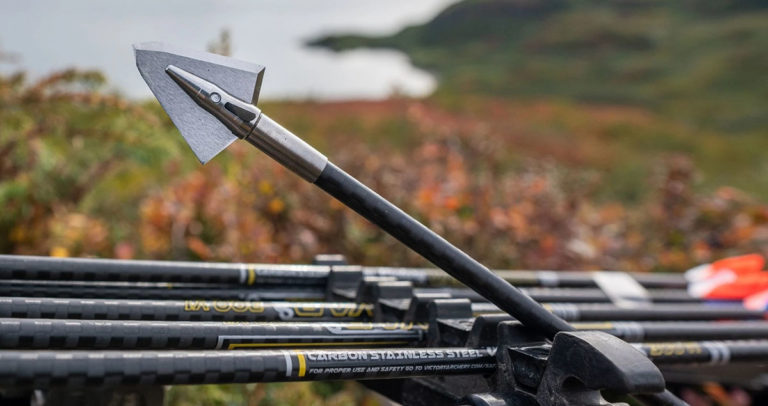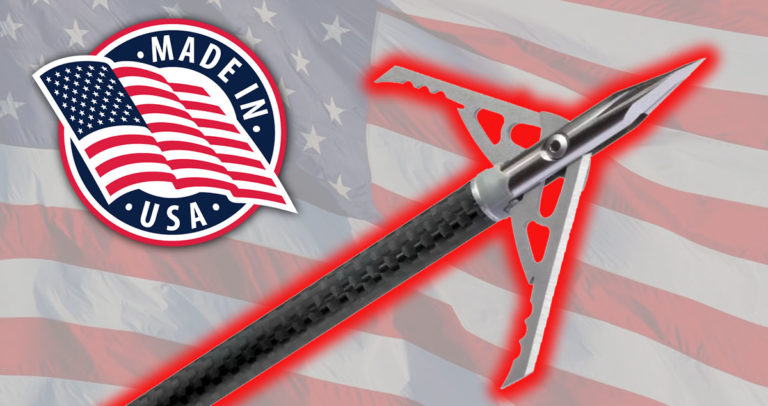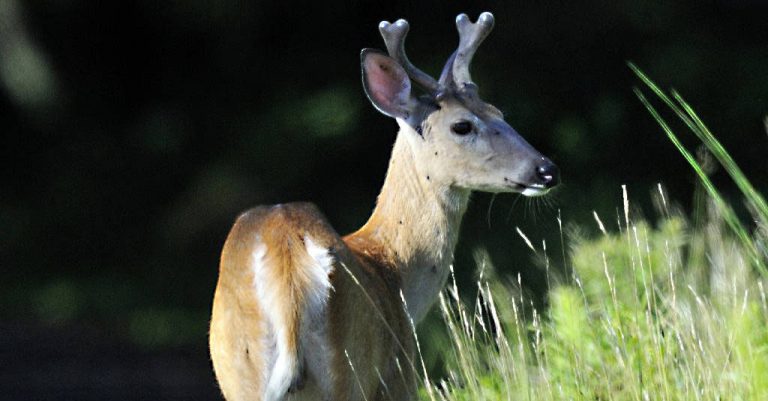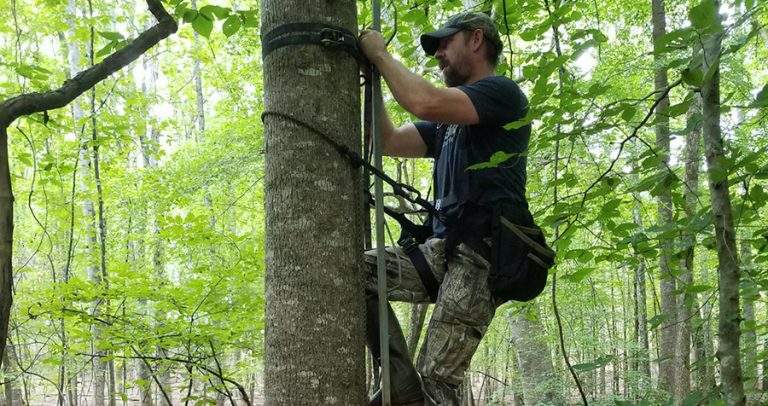Bag Your Bird on Opening Day
Last Updated on December 10, 2021 by Brian Grossman
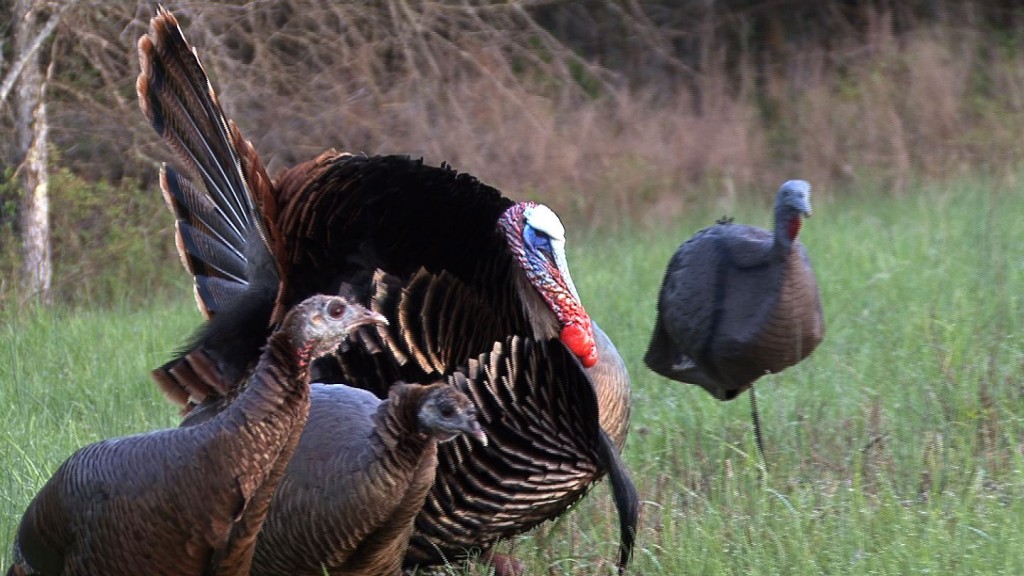
There’s nothing more discouraging than arriving at your favorite hunting spot on the opening morning of turkey season, and not being able to get a bird to gobble. That’s exactly the situation I found myself in back in April of 2008. The fact that the temperature was hovering right around the freezing mark and there was a heavy frost on the ground probably didn’t help matters any. Despite the lack of gobbling activity, I knew from my time preseason scouting that birds frequented this field and it was a popular strutting ground for at least one mature gobbler.
After popping up my portable blind, I positioned my new Primos B-mobile and She-mobile decoys 20 yards out and got situated for the morning hunt. I would occasionally make some soft clucks and yelps on my slate call, hoping that there was a big gobbler roosted somewhere within earshot of my calls. As the sun slowly began to peek its way over the trees behind me, I thought I heard the faint sound of a bird flying down off of the roost. Minutes later the first gobble broke the morning silence, and I could tell the bird was just inside the woodline to my left.
For what seemed like an eternity, that bird stood at the edge of the woods staring at the decoys and gobbling his head off. I was starting to regret the decision to put out B-mobile, as it seemed that the bird was intimidated by the decoy. That thought quickly faded, though, as the bird blew up into full strut and started a brisk walk into the field and straight for the decoys. I stood and watched in disbelief as B-mobile took a thumping from that old tom. After several rounds of flogging and pecking, the bird finally seemed to realize that something wasn’t right and started to walk away. I quickly put the front bead of my Mossberg shotgun at the base of the bird’s neck and squeezed the trigger, bringing the three year-old bird down for the count.
While I never discount luck as a key ingredient to having a successful turkey hunt, there were certainly some other factors that came into play here, including a lot of preparation well before opening day. Let’s take a look at how you can be prepared for this upcoming turkey season and tip the odds in your favor of bagging that bird on opening day.
CALLING ALL TURKEYS
My preseason routine for turkey hunting used to go a lot like this: At some point during the week leading up to turkey season, I would get out the storage tote with all my gear, and neatly pack my turkey vest for the opening day. I may make a few calls on my favorite slate or try out one of my mouth calls, but that was about as far as I’d go. Then, when I was out in the field on opening day, I’d get frustrated because I couldn’t get my calls to sound the way I wanted.
These days, I start driving my wife, kids and dogs crazy with the turkey calls months before the season opens. I get out all my friction calls, box calls, and mouth calls and thoroughly check each one to make sure it is ready for the season. I then go through the routine of practicing with each one, trying to mimic all the important sounds of a wild turkey – the cluck, yelp, purr, kee kee and fly down cackle.
If you are relatively new to turkey hunting, or still working on perfecting your mouth call, then I would highly recommend picking up a CD of live turkey sounds, and practicing along with it. Don’t just learn to make the sounds, but make sure you understand what they mean to a turkey and when to use each. Also make sure you are able to vary your tone from very loud (for aggressive calling), down to very soft (when working call shy birds). While practicing your calling is important, keep in mind that you don’t have to sound like a competition caller to call a turkey into shotgun range. If you’ve ever listened to a flock of turkeys in the wild, you quickly learn that they don’t sound “perfect” either! If nothing else, work on mastering clucks and yelps and you shouldn’t have any trouble filling your tags – especially if you follow the rest of the steps outlined below.
PATTERN YOUR GUN
I remember in my early years as a turkey hunter, I would hear guys talk about missing turkeys, and wonder how in the world they could miss such a big bird with a shotgun! It wasn’t too many years later that I learned the answer to that question the hard way. I had spotted a big gobbler strutting in a field and belly-crawled about 50 to 60 yards to get within range. When I eased up over the rise in front of me, the bird popped his head up at about 40 yards and I could already taste the fresh fried turkey. When I squeezed the trigger, however, I was shocked to see the bird fly off unscathed.
A quick trip to the shooting range revealed that I had a pretty big “hole” in my pattern at that range. I hadn’t noticed it before because the birds that I had killed previously were all within 20 yards, and I hadn’t taken the time to pattern my shotgun.
A lot of hunters seem to make the same mistake that I did because they think with all those pellets coming out the end of the barrel, there is no need to “sight in” a shotgun. If every shot was 20 yards and under, that may be the case, but we all know that sometimes longer shots are necessary, and you have to know how your gun and the shell you are shooting are going to perform at those longer ranges. Every gun is different and no two choke tubes or turkey loads are going to perform exactly the same. That is why you should take the time, preseason, to shoot several different brands of shells from various distances to see exactly how well each one patterns in your shotgun. Then, go with the one that consistently puts the most pellets in the kill zone.
THEN PATTERN THE BIRDS
It never ceases to amaze me how many guys will spend weeks and even months scouting and preparing for deer season, but when turkey season rolls around, they just wait until the night before to try to roost a bird (I’ve been guilty of it myself!). Nothing will prepare you better to bag that tom on opening day more than a little preseason scouting. In the weeks leading up to turkey season, the birds are pretty consistent in their daily patterns, and a little bit of scouting can go a long ways.
I like to start a few weeks prior to the season by simply getting out early in the morning and listening for birds to gobble. Once I have located some birds, I take note of where they are roosting, and the direction they head once they fly off the roost. This gives me a good initial starting point, so in the following weeks I can focus on getting a feel for their normal travel routes throughout the day – where they are feeding and where they are strutting. Whatever you do, though, do NOT make the mistake of using this time in the field to call to the birds. Not only is this illegal in some states (such as my home state of Kentucky), but it is also a great way to educate the birds and make them call-shy before the season ever opens.
When you are scouting preseason, it’s not only important to know the patterns of the birds in the area, but it is also vital that you know the lay of the land on the properties that you hunt. That means knowing the ridges, the hollows, the creeks, the forest openings, as well as any fences or natural travel barriers in the area. When trying to get set up on a gobbling bird, this knowledge can mean the difference between a filled tag and a spooked bird.
PLAY IT SAFE
I can’t finish out an article on turkey hunting without briefly touching on the safety aspect. Every year across the country we hear heartbreaking stories about turkey hunts that end in tragedy. Most, if not all, of these tragedies could have been avoided by following just a few simple safety rules. Let’s take a look at a few of those rules.
- Never stalk a turkey. The chances of getting close enough for a shot are slim, but the chances of becoming involved in an accident are increased.
- Eliminate the colors red, white, and blue from your turkey hunting outfit. Red is the color most hunters count on to differentiate a gobbler’s head from the hen’s blue-colored head.
- Never move, wave, or make turkey sounds to alert another hunter to your presence. A quick movement may draw fire. Yell in a loud voice and remain hidden.
- Be particularly careful when using a gobbler call. The sound and motion may attract other hunters.
- Select a calling position that provides a background as wide as your shoulders, and one that will completely protect you from the top of your head down. Small trees will not hide slight movements of your hands or shoulders which might look like a turkey to another hunter who could be unwisely stalking your calls. Position yourself so you can see 180 degrees in front of you.
- Never shoot at a sound or movement. Be 100 percent certain of your target before you pull the trigger. Don’t ever shoot at a “piece” of a turkey. You must see the whole bird to determine whether it is safe or legal to shoot. A good rule of thumb is to not shoot until you can clearly see the gobbler’s eye. That way, the bird will be in range and you will be sure it is a turkey.
- When turkey hunting, assume that every sound you hear is made by another hunter. Once you pull the trigger, you can never take that shot back.
- Keep your gun unloaded until you are set up in the field. Keep your finger off the trigger until you are ready to shoot.
SUMMARY
Regardless of how much we prepare for turkey season, there are never any guarantees that we’ll fill a tag on opening day. By taking the time, however, to practice our calling, pattern our shotgun, and scout our hunting areas, we can certainly tip the odds in our favor. That way, even if we don’t fill that tag on opening day, we will be one step closer to putting a bird on the table that second day!

